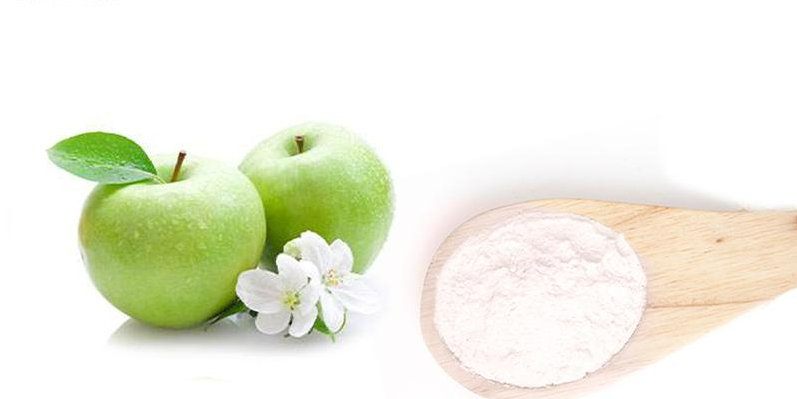1.-What is phloretin-
Phloretin (English name: Phloretin), also known as trihydroxyphenolacetone, belongs to the dihydrochalcones among flavonoids. It is concentrated in the rhizomes or roots of apples, strawberries, pears and other fruits and various vegetables. It is named after the skin. It is soluble in alkali solution, easily soluble in methanol, ethanol and acetone, and almost insoluble in water.
Phloretin can be directly absorbed by the human body, but in plants, there is very little naturally occurring phloretin. Phloretin mostly exists in the form of its glycoside derivative, phlorizin. The phloretin absorbed by the human body is in the gastric mucosa. Only after the glycoside group is removed to generate phloretin can it enter the circulation system and exert its effect.
Chemical name: 2,4,6-trihydroxy-3-(4-hydroxyphenyl)propiophenone
Molecular formula: C15H14O5
Molecular weight: 274.27
2.-Main functions of phloretin-
Flavonoids have anti-fat oxidation activity, which has been confirmed as early as the 1960s: the polyhydroxyl structures of many flavonoids can have significant antioxidant properties by chelating with metal ions.
Phloretin is an excellent natural antioxidant. The 2,6-dihydroxyacetophenone structure has a very good antioxidant effect. It has an obvious effect on scavenging peroxynitrite and has a high antioxidant concentration in oils. Between 10 and 30PPm, it can remove free radicals in the skin. Phlorizin’s antioxidant activity is greatly reduced because its hydroxyl group at position 6 is replaced by a glucosidyl group.
Inhibit tyrosinase
Tyrosinase is a copper-containing metalloenzyme and is a key enzyme in the formation of melanin. The tyrosinase activity can be used to evaluate whether the product has whitening effect. Phloretin is a reversible mixed inhibitor of tyrosinase. It can prevent tyrosinase from binding to its substrate by changing the secondary structure of tyrosinase, thereby reducing its catalytic activity.
Antibacterial activity
Phloretin is a flavonoid compound with antibacterial activity. It has inhibitory effects on a variety of Gram-positive bacteria, Gram-negative bacteria and fungi.
Clinical trial results show that after subjects used phloretin for 4 weeks, whiteheads, blackheads, papules, and sebum secretion were significantly reduced, indicating that phloretin has the potential to relieve acne.
3. Recommended ingredients
essence
2% phloretin (antioxidant, whitening) + 10% [l-ascorbic acid] (antioxidant, collagen promotion and whitening) + 0.5% ferulic acid (antioxidant and synergistic effect), can resist ultraviolet rays in the environment , infrared radiation and ozone damage to the skin, brighten the skin tone, and is more suitable for oily skin with dull skin tone.
Post time: Apr-23-2024




